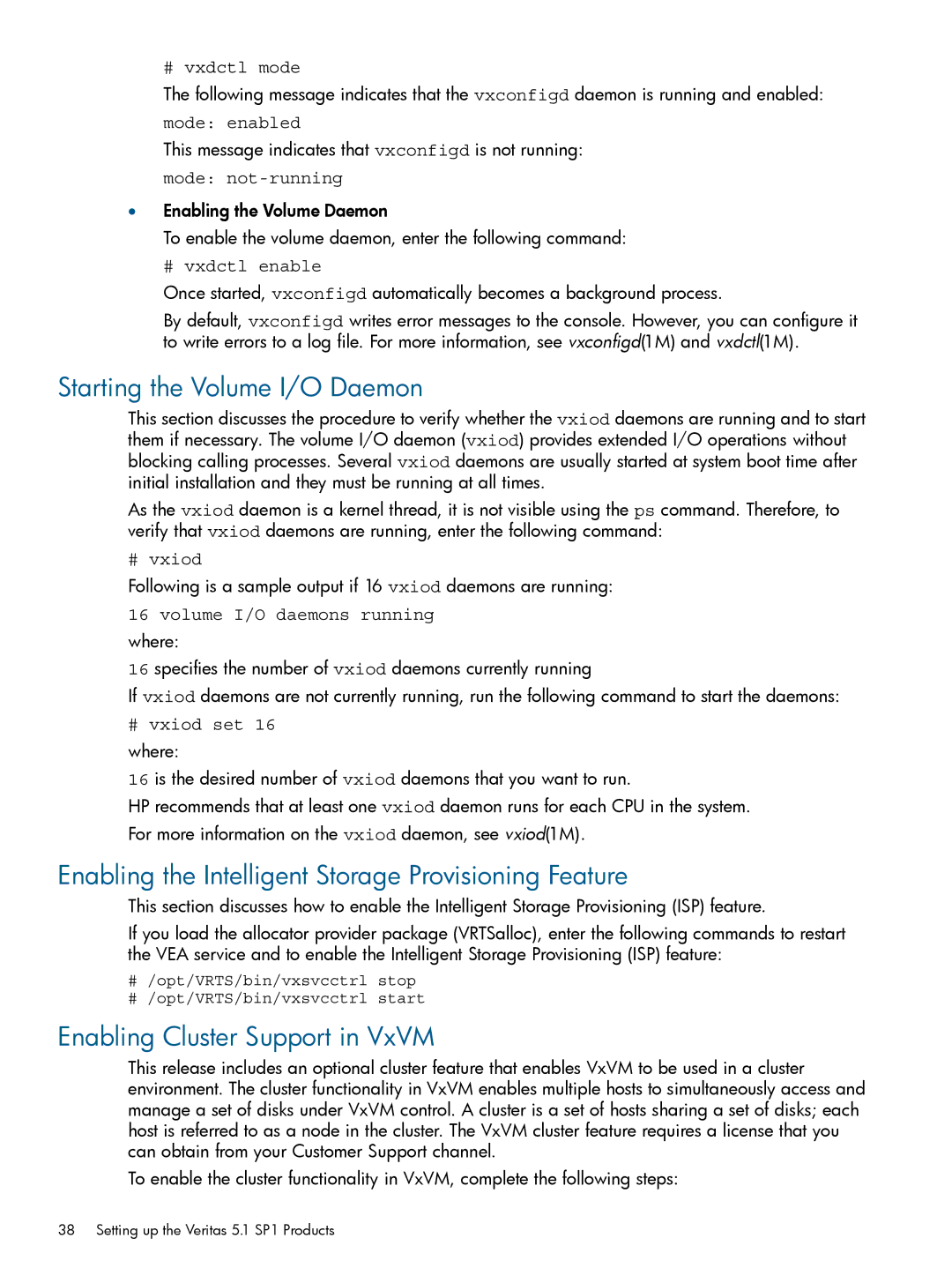# vxdctl mode
The following message indicates that the vxconfigd daemon is running and enabled:
mode: enabled
This message indicates that vxconfigd is not running:
mode:
•Enabling the Volume Daemon
To enable the volume daemon, enter the following command:
# vxdctl enable
Once started, vxconfigd automatically becomes a background process.
By default, vxconfigd writes error messages to the console. However, you can configure it to write errors to a log file. For more information, see vxconfigd(1M) and vxdctl(1M).
Starting the Volume I/O Daemon
This section discusses the procedure to verify whether the vxiod daemons are running and to start them if necessary. The volume I/O daemon (vxiod) provides extended I/O operations without blocking calling processes. Several vxiod daemons are usually started at system boot time after initial installation and they must be running at all times.
As the vxiod daemon is a kernel thread, it is not visible using the ps command. Therefore, to verify that vxiod daemons are running, enter the following command:
# vxiod
Following is a sample output if 16 vxiod daemons are running:
16 volume I/O daemons running
where:
16 specifies the number of vxiod daemons currently running
If vxiod daemons are not currently running, run the following command to start the daemons:
# vxiod set 16
where:
16 is the desired number of vxiod daemons that you want to run.
HP recommends that at least one vxiod daemon runs for each CPU in the system.
For more information on the vxiod daemon, see vxiod(1M).
Enabling the Intelligent Storage Provisioning Feature
This section discusses how to enable the Intelligent Storage Provisioning (ISP) feature.
If you load the allocator provider package (VRTSalloc), enter the following commands to restart the VEA service and to enable the Intelligent Storage Provisioning (ISP) feature:
#/opt/VRTS/bin/vxsvcctrl stop
#/opt/VRTS/bin/vxsvcctrl start
Enabling Cluster Support in VxVM
This release includes an optional cluster feature that enables VxVM to be used in a cluster environment. The cluster functionality in VxVM enables multiple hosts to simultaneously access and manage a set of disks under VxVM control. A cluster is a set of hosts sharing a set of disks; each host is referred to as a node in the cluster. The VxVM cluster feature requires a license that you can obtain from your Customer Support channel.
To enable the cluster functionality in VxVM, complete the following steps:
38 Setting up the Veritas 5.1 SP1 Products
